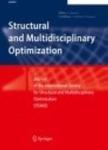版权所有:内蒙古大学图书馆 技术提供:维普资讯• 智图
内蒙古自治区呼和浩特市赛罕区大学西街235号 邮编: 010021

作者机构:Natl Renewable Energy Lab 15013 Denver W Pkwy Golden CO 80401 USA Penn State Univ Dept Architectural Engn 220 Engn Unit A University Pk PA 16802 USA Penn State Univ Stuckeman Sch Architecture & Landscape Architectur 150 Stuckeman Family Bldg University Pk PA 16802 USA Penn State Univ Engn Design & Mfg 209 Leonhard Bldg University Pk PA 16802 USA
出 版 物:《STRUCTURAL AND MULTIDISCIPLINARY OPTIMIZATION》 (Struct. Mutltidiscip. Opt.)
年 卷 期:2023年第66卷第11期
页 面:239-239页
核心收录:
学科分类:08[工学] 0812[工学-计算机科学与技术(可授工学、理学学位)] 0801[工学-力学(可授工学、理学学位)] 080102[工学-固体力学]
基 金:This research was supported by NSF grant CMMI-1455424 and CMMI-1455444. Any opinions, findings, and conclusions or recommendations expressed in this material are those of the authors and do not necessarily reflect the views of the National Science Foundati [CMMI-1455424, CMMI-1455444] NSF
主 题:Problem structuring methods Model and simulation-based engineering Multi-fidelity modeling Multi-objective optimization Tradespace exploration
摘 要:The design of buildings has become a complex and multidisciplinary problem involving multiple conflicting objectives as architects and designers address competing technical, economic, environmental, and societal concerns. This has been driving research in Architecture, Engineering, and Construction (AEC) toward rigorous multidisciplinary decision-making frameworks that generate and evaluate numerous design alternatives using multi-objective optimization in concert with simulation and analysis models of varying fidelity and computational expense. While such frameworks are well known and widely employed in the aerospace and systems engineering domains, efforts by design professionals and researchers in the AEC field are scattered at best. In this paper, we provide a detailed review of recent developments in optimization frameworks in the AEC field and subsequently highlight how such developments are largely compartmentalized into separate domains such as structural, energy, daylighting, and other performance factors. We further discuss the technical challenges involved in concurrent coupled multidisciplinary design optimization (MDO) in the AEC field such as interoperability issues between Building Information Modeling (BIM) environments, analysis/simulation tools, and optimization frameworks. We conclude by outlining research needed for more unified modeling and simulation-based optimization frameworks to aid in complex and multidisciplinary building design processes. We also highlight the need for the identification and development of multi-fidelity simulation tools for use across multiple design phases. As such, this paper contributes a novel roadmap to leverage aerospace and systems engineering research in MDO into the field of AEC, along with a call for researchers in the MDO community to seek collaborations in AEC field.